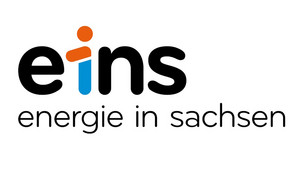Chemnitz is a city of doers. History offers proof of this - the application process was also supported from the very beginning by many tireless actors, volunteers and civic initiatives. It is no coincidence that the application emphasises making, DIY (Do It Yourself), the "artist in you", autodidacts and the creative process.
Making together is the step towards each other in a European society that is increasingly shying away from constructive exchange in discussions. In Eastern Europe in particular, the brutality and speed of change over the last 30 years has left many injuries that continue to have an effect on the bent. As a result, countless people have withdrawn from the political debate. While extreme political opinions are becoming louder, such as in Chemnitz in August 2018, the centre is silent. Chemnitz 2025 wants to encourage this "silent centre" to get involved again: in the neighbourhoods, in the cities, in the regions of Europe. Because the challenges facing Europe require active Europeans: in the fight against climate change, in dealing with demographic change, in containing the social and economic consequences of the COVID-19 pandemic.
Chemnitz 2025 will help these active Europeans to achieve self-efficacy: with the maker-space.eu platform, an innovative digital tool that brings together analogue and digital activities, promotes international exchange, enables hybrid projects and creates networks. With a broad-based workshop and training programme, the Hartmannfabrik will become a meeting point for makers, an experimental space, the starting point for the Academy of Autodidacts, an academic centre in the field of right-wing extremism and a living archive over the next few years. In 2025, the European Capital of Culture Visitor and Information Centre will also be located there.
With the motto C the Unseen, Chemnitz 2025 is focussing on the unseen: on the surprising, the new - as it has never been seen before. To the unseen of the "quiet centre" as well as the marginalised. To the unseen city, the unseen European neighbours, the unseen places and biographies, the unseen talents in each individual. The programme also includes every other unseen city or region in Europe that contributes a strong statement for democratic coexistence - and especially the people who help in the creative process to live a cosmopolitan, diverse community across national borders.
We are the European Capital of Culture
The title of European Capital of Culture has been awarded for one year at a time since 1985. The European Capital of Culture 2025 was nominated by the Council of the European Union in 2020 following a multi-stage application process - two European cities hold this title each year. in 2025, the European Capital of Culture will be Chemnitz in Germany and Nova Gorica in Slovenia.
The official application phase for the cities in Germany began on 24 September 2018. Chemnitz made it onto the shortlist in December 2019 and the final decision was made in October 2020. The European Commission is supporting the entire selection process. In Germany, West Berlin (1988), Weimar (1999) and Essen/Ruhr (2010) last held the title.
From the application to the Capital of Culture year
The BidBook was created for the first stage of the application, which ran from September 2018 to September 2019. This convinced the jury so much that Chemnitz made it onto the shortlist of German cities. In a second round, the application portfolio was created, which ultimately defines the cultural strategy for Chemnitz 2025. You can find it here as a PDF document.
Chemnitz 2025 Handbook
The handbook Chemnitz 2025 - Strategic Foundations for a European Capital of Culture of the Makers sets out all the basic principles that result from the application book for strategic planning and production. It is intended to serve as a guideline for all Capital of Culture makers for the activation of potential: first and foremost the gGmbH, but also the fellow campaigners on the way to the Capital of Culture. The handbook presents the concepts and key aspects that are essential for the short and long-term success of the joint Capital of Culture project.
You can find the Chemnitz 2025 handbook here as a PDF document.
How does the Capital of Culture work?
The Capital of Culture is not a state, but a process. To be awarded this title, cities must present a coherent concept of how they can make culture the driving force behind urban development. How a creative climate will become the breeding ground for the urban life of the future. And how, as a city in Europe, they can become a European city. Year after year, two European cities exemplify this. We can learn from all of them, regardless of whether they are called Glasgow, Marseille, Pilsen, Wroclaw, Leeuwarden or Valetta. On the way to their Capital of Culture year, they have all recognised their regional particularities and problems and allowed them to lead to a new self-image: within their own urban population and within Europe. This is not a 365-day celebration, but a sustainable strategy with a one-year interim high.
How does that fit in with Chemnitz?
Chemnitz has also embarked on this challenging path, as the city not only wants to stand for sophisticated jobs and successful companies, but also to help the great creative potential and cultural diversity to break through to a much greater extent. Some call this endeavour plain nonsense, others a beautiful vision - and many already see it as a great opportunity. A worthwhile journey for all Chemnitz residents with a desire for change. How do we want to live? How do we want to work? How do we design urban spaces? What influence does history have on our identity? These are all questions that urban society must ask itself in order to consciously shape the future according to its own wishes.









































